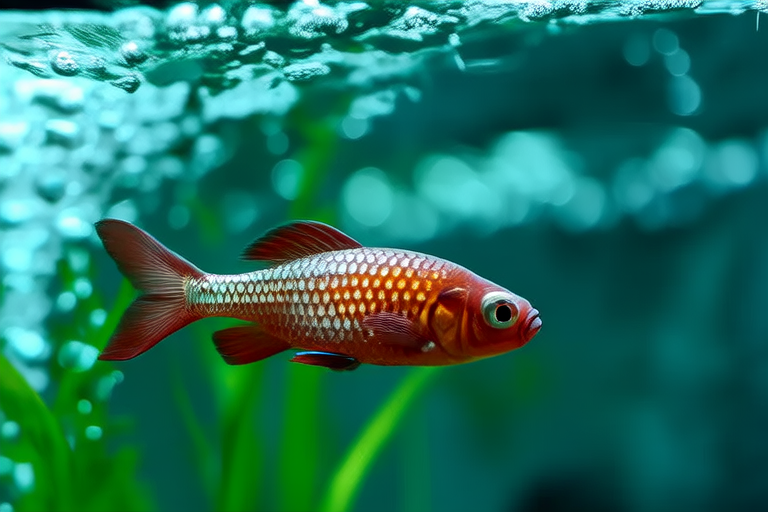The Ultimate Guide to Goldfish Care: Tips from Experts
Goldfish are one of the most popular choices for aquarium enthusiasts due to their vibrant colors and relatively low maintenance requirements. However, proper care is essential to ensure your goldfish thrive and live long, healthy lives. This comprehensive guide, filled with expert advice and scientific insights, covers all the essential aspects of goldfish care.
Choosing the Right Tank Size
One of the first decisions you’ll need to make is determining the appropriate tank size for your goldfish. Contrary to common belief, goldfish require more space than many people realize. A general rule of thumb is to provide at least 20 gallons of water per goldfish. For instance, a single goldfish should be housed in a 20-gallon tank, while two goldfish would require a 30-gallon tank. Larger tanks not only offer more swimming room but also help maintain better water quality by diluting waste products.
Filtration Systems
Effective filtration is crucial for maintaining clean and healthy water conditions. Goldfish produce a significant amount of waste, which can lead to ammonia and nitrite build-up if not properly filtered. There are three main types of filtration: mechanical, biological, and chemical. Mechanical filtration removes solid debris, biological filtration converts harmful ammonia into less toxic nitrites and nitrates through bacterial action, and chemical filtration helps remove dissolved organic compounds.
Experts recommend combining these filtration methods for optimal results. A good quality external filter that provides adequate flow and surface agitation is ideal. Surface agitation is important as it increases oxygen levels in the water, which is vital for goldfish health.
Water Quality Maintenance
Maintaining excellent water quality is key to keeping goldfish healthy. Regular water changes are necessary to remove accumulated toxins and refresh the environment. It’s recommended to change approximately 25% of the water weekly. Always use a dechlorinator when adding new water to neutralize chlorine and chloramines found in tap water.
Monitoring water parameters such as pH, ammonia, nitrite, and nitrate levels is equally important. The ideal pH range for goldfish is between 6.8 and 7.4. Ammonia and nitrite should always read zero, while nitrates should be kept below 40 ppm. Test kits are available at pet stores and online retailers, allowing you to monitor these parameters easily.
Suitable Tank Mates
Choosing compatible tank mates for your goldfish can enhance their environment and enrich their lives. However, it’s crucial to select species that have similar water parameter needs and activity levels. Slow-moving fish like other goldfish, fantails, or comets are good companions. On the other hand, fast-swimming species may outcompete goldfish for food and create stress.
Avoid housing goldfish with aggressive or territorial fish such as bettas or cichlids. Also, refrain from keeping goldfish with small fish like neon tetras, as they may become prey. Research each potential tank mate thoroughly before making additions to ensure compatibility.
Diet and Nutrition
Proper nutrition is essential for maintaining your goldfish’s health and vitality. A balanced diet should consist of high-quality flake foods, pellets, and occasional treats. Flakes and pellets should be rich in protein, vitamins, and minerals to support growth and overall health. Experts suggest feeding your goldfish two to three times daily, offering only what they can consume within a few minutes.
Variety is also important in a goldfish’s diet. Supplement their meals with occasional treats like freeze-dried bloodworms, brine shrimp, and spirulina-based flakes. These treats provide additional nutrients and can stimulate appetite. Overfeeding should be avoided as it leads to poor water quality and obesity.
Common Health Issues
Despite proper care, goldfish may still face health challenges. Some common issues include fin rot, swim bladder disorders, and ich (white spot disease). Fin rot manifests as frayed or discolored fins and is often caused by poor water quality or bacterial infections. Swim bladder disorders result in buoyancy problems, preventing the fish from swimming correctly. Ich presents as tiny white spots on the body and fins and is usually due to temperature fluctuations or stress.
To prevent these issues, maintain excellent water quality and quarantine new fish before introducing them to your main tank. If health problems arise, consult an aquatic veterinarian for diagnosis and treatment. Early intervention is crucial for successful recovery.
Regular Care Routines
Establishing a routine for regular maintenance will help ensure your goldfish remain healthy and happy. In addition to water changes and monitoring water parameters, perform regular tank cleaning. This includes vacuuming the substrate to remove uneaten food and waste, and cleaning the filter media to prevent clogging and maintain efficient filtration.
Observing your goldfish daily allows you to catch any unusual behavior early. Look for signs of distress, such as lethargy, loss of appetite, or physical abnormalities. Quick action can prevent minor issues from becoming serious problems.
Conclusion
Caring for goldfish requires attention to detail and commitment to providing the best possible environment. By following the guidelines outlined in this ultimate guide, you can ensure your goldfish enjoy long, healthy lives. Remember, each goldfish is unique, so adapt your care practices based on individual needs and behaviors. With proper care and attention, your goldfish will bring joy and beauty to your home for years to come.
